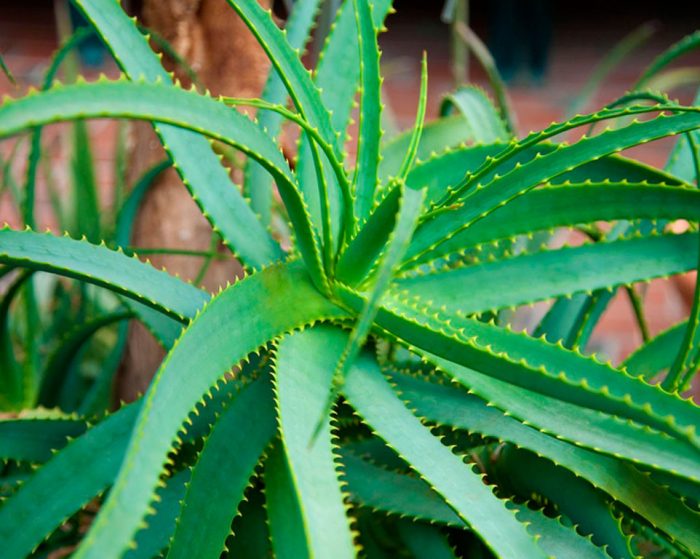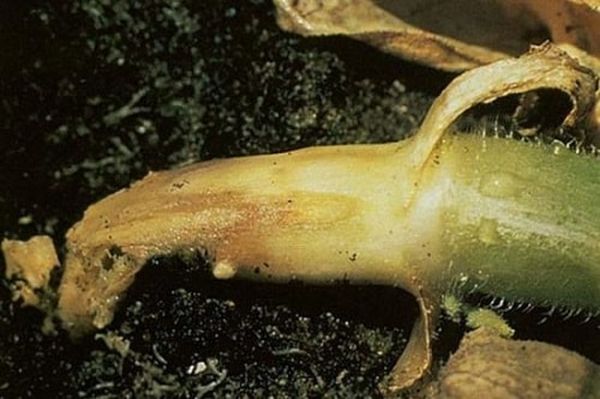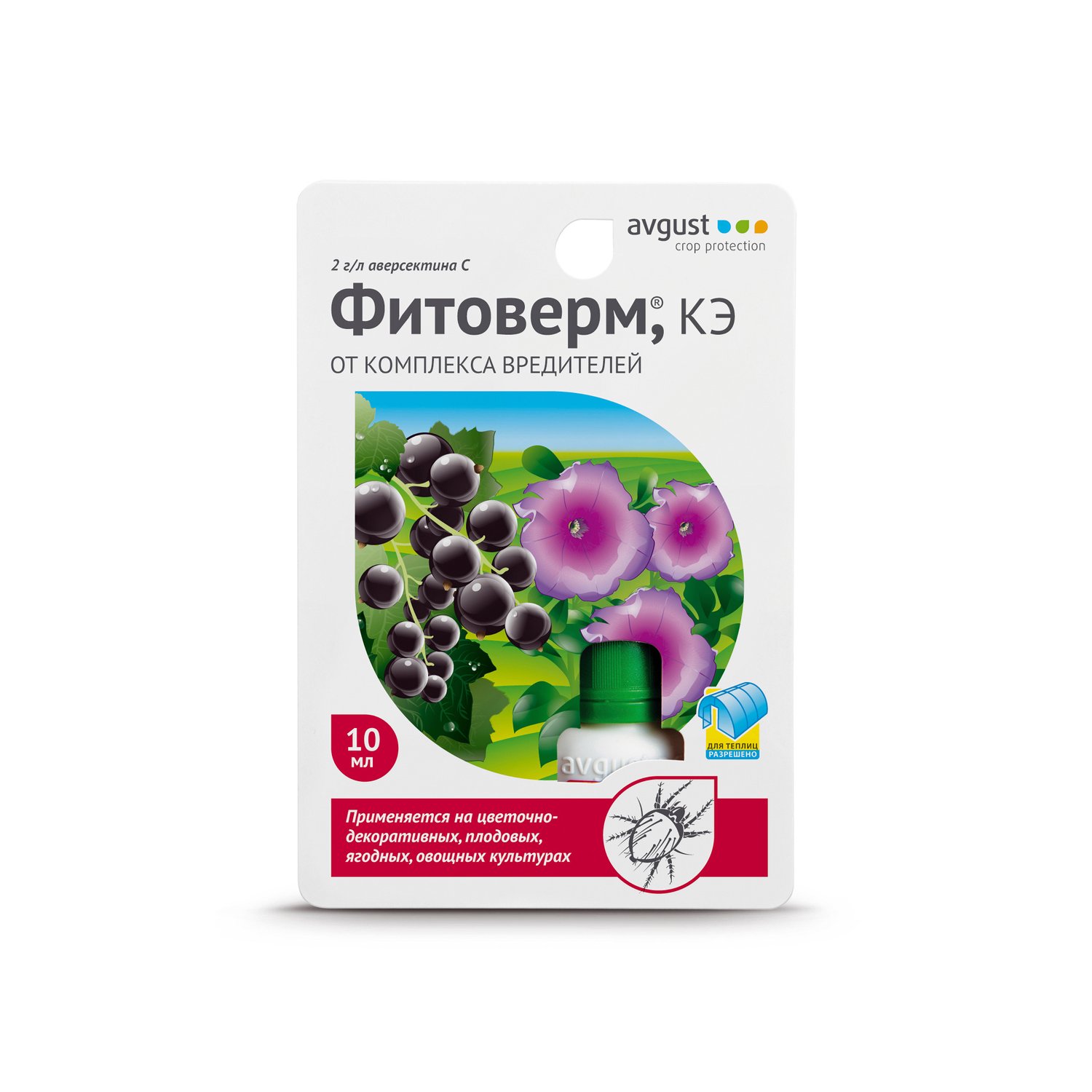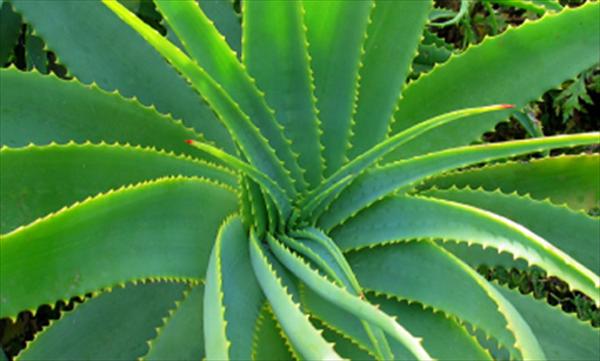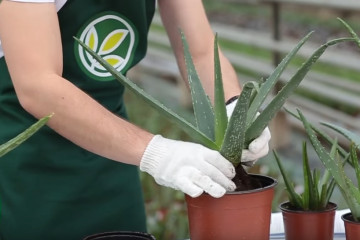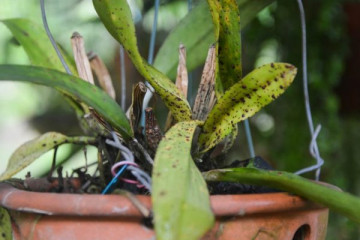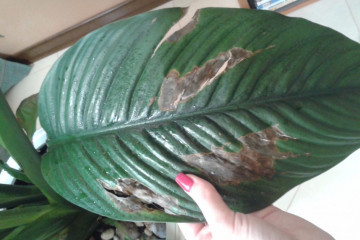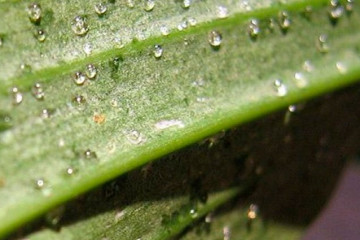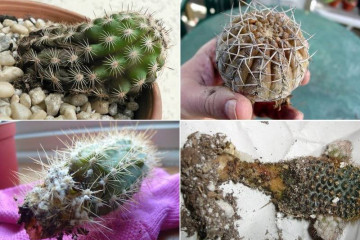Aloe vera diseases: causes of diseases and their treatment options
Content:
Aloe belongs to succulents, the Asphodelic family. To date, science knows about more than 500 plant species. It can be tree, shrub, herbaceous, or leafy. The leaves are thick, fleshy, forming the trunk of the flower. Their length can reach 60 cm. The peculiarity of succulents is that they can accumulate a large amount of water in themselves.
With good watering, aloe leaves can grow in size, the top layer of the leaf is very dense and does not contain pores through which water can evaporate. With a lack of moisture, the leaves become thin, and the lower ones completely disappear.
Common diseases of aloe
The aloe flower is quite hardy, but with improper care it can be affected by some diseases. The most common diseases of aloe are:
- Spots on the leaves;
- The tips of the leaves dry out;
- Leaves turn yellow;
- The plant withers;
- The sheet is curled;
- Root rot;
- The plant has stopped growing.
Dry tips
The dry end of the aloe leaf indicates that it is time to replant the plant. The root system has grown too much, and it does not have enough space in the pot, therefore, it does not receive the required amount of substances to feed the entire leaf. As soon as there is room for the roots, the problem of dry ends will disappear.
Spots on the leaves
Aloe leaf spots can appear for several reasons. For example, during drought, brown or red spots of irregular shape are formed on the leaves. The same reaction explains the fact why the leaves of aloe turn yellow. In these cases, the number of irrigations must be increased; it is even better to irrigate not into the ground, but into the pallet. In this way, both an excess of moisture and a lack of moisture can be prevented.
If dark, black spots began to appear on the leaves, it means that the plant has attacked a fungal disease. These spots can be soft to the touch. As soon as the slightest reddening of the leaf became noticeable, the flower is transferred to a well-ventilated room and the leaves are treated with fungicides.
Yellowing of leaves
Aloe turns yellow, what should I do? If the leaves of aloe turn yellow, it is recommended to pay attention to the amount of watering and the quality of the water. The leaves of the plant begin to turn yellow from an excess of moisture.
In addition to the fact that the number of irrigations must be reduced, water should be used only settled and warm, not lower than room temperature. Some gardeners are also worried about the question: why do the leaves of aloe turn red. The plant gives out such a reaction to direct sunlight, which burns the flower.
Withers
Why do aloe leaves dry? It may be a neglected disease, it may be a pest that sucks out the sap of the plant, poisoning it with its toxic poisons, it may be unstable watering or dry rot. If the first problems can be dealt with with the help of additional agents in the form of fungicides or dressings, then dry rot is a more serious problem.
In the initial stages, when the flower can still be saved, it does not give itself out in any way, because the plant begins to rot from the inside. In the final stages, aloe can quickly darken and begin to die.In case of damage to the flower by dry rot, it is recommended to carry out cuttings of the upper shoots.
Leaves curl up
Very often, aloe leaves can curl into a tube. This is due to the dust that settles on the surface of the sheet.
In order to get rid of this disease or to prevent it, the sheets should be regularly wiped with a damp cloth.
Other
Aloe can attack root rot. The plant can be cured in the early stages of the disease. When a plant is damaged by root rot, its growth stops, the leaves begin to darken and gradually dry out. If methods have been tried to increase watering and reduce the amount of moisture, and this has not yielded any results, you should pay attention to the root system.
Rotten roots are cut and removed, healthy ones are sprinkled with sulfur. The plant is transplanted into soil, most of which consists of sand. After transplanting, it is recommended to water the aloe after 3 weeks.
Aloe vera stagnation may indicate that the soil is very low in nutrients. It is recommended to regularly use fertilizer for the flower, be sure to dilute the soil with wood chips and check the flower for pests.
The main causes of diseases
The main conditions for the rapid and proper development of aloe are regular watering, diffused light and a well-ventilated room. In addition to diseases that appear from improper maintenance and care, pests can attack the flower.
Types of parasites
The most common parasites that can harm aloe are:
- Thrips;
- Mealybug;
- Nematodes;
- Spider mite, etc.
The ideal environment for thrips to live and reproduce is high air temperature and high humidity. The parasite is an insect that reaches a length of 2 mm. Typical signs of thrips appearance are whitish stripes on the leaves, suspension in growth.
Mealybug is an insect, 5 mm long, light brown in color with small white hairs on the back, very mobile. It leaves its whitish discharge on the leaves of the plant, which has a waxy consistency. Typical signs of a mealybug affection of a flower are small, airy pieces, similar to fluff, that stick to the surface of the leaves. Plant growth also slows down.
Nematodes are divided into several types. Some infect exclusively the leaves, others parasitize on the roots. Surface nematodes can be removed using various means that are purchased in specialized stores; when aloe is affected by root nematodes, the flower dies very quickly. The characteristic signs of the presence of root nematodes are slow growth of the plant and the detection of small outgrowths in the form of grains on the roots.
Control methods
In most cases of aloe parasite infestation, you can get rid of them. For this, both traditional methods and the treatment of the plant with chemical preparations are used.
Folk remedies
For the treatment of aloe with folk methods, various means are used, which are found in almost every home. To remove many insect pests, aloe leaves are wiped with cotton pads dipped in 9% vinegar. Another way to get rid of the pest is to make an alcoholic tincture with garlic and sprinkle the plant liberally. Another universal method that helps to cure or prevent flower diseases is to treat the leaves with a solution of laundry soap.
As a rule, traditional methods help in the initial stages of the disease. If the disease is started, it is better to save the plant with chemicals.
Chemical substances
The most common drugs that treat aloe vera diseases are:
- Neoron;
- Actellik;
- Fitoverm;
- Rogor;
- Intavir;
- Decis;
- Fufanon, etc.
Neoron
It is an emulsion, the main active ingredient of which is bromopopylate. Effectively fights various types of mites, including spider mites, which are often found on aloe leaves. Eliminates not only adults, but also destroys egg-laying. 1 ampoule is dissolved in 10 liters of water. All surfaces of the plant are treated with the resulting solution.
Actellic
It is based on an organophosphate pesticide. Affects the central nervous system of insect pests, paralyzing them. It has proven itself well in the fight against aphids, thrips, ticks, etc. For aloe, you need 3 ml of the drug, dissolved in 5 liters of water. Spraying is carried out at a temperature of 10 to 25⁰С.
Fitoverm
Effective for fungal diseases, when rot is detected. Fights aphids, thrips, surface nematodes. Not very effective against ticks. It is undesirable to mix with other drugs. The ampoule dissolves in 10 liters of water.
It can also be used to treat other indoor plants for preventive purposes.
Rogor
The active ingredient is dimethoate. Causes depressed breathing in pests, provokes disruptions in cardiac activity. The drug kills insects by direct contact with the latter. It begins to act within 3 hours after spraying. It can be used for preventive purposes, but no more than 2 times a year.
Intavir
It has proven itself well in pest control on indoor flowers. Intavir affects the nervous system of insects, paralyzing them. It can be used in conjunction with other insecticidal products. The effect is manifested within 10 days after the treatment of aloe. Non-toxic.
Decis
Acts on the central nervous system of pests. Fast acting. Within a few minutes, you can notice the effectiveness of his work. Absolutely non-toxic. The drug is odorless. In packs it is packaged in 600 grams. Can be used not only for indoor plants.
Fufanon
Has a wide range of effects. It copes well with invasions of nematodes and aphids. It is mainly used in agriculture, but has proven itself well in treating indoor aloe from insect pests. In order to prepare an emulsion, it is necessary to dissolve 10 ml of the drug in 9 liters of settled water. All plant surfaces are treated.
Aloe is a hardy and low maintenance plant. Despite the fact that it is called a millennial, it can bloom quite infrequently, approximately 1 time in 5-7 years. Also, the plant has medicinal properties, so the juice obtained from its leaves is often used in alternative medicine.
When growing a flower at home, it is recommended to water it regularly, choosing the optimal amount of liquid and an interval. This will help avoid questions about why aloe has thin leaves, or why aloe has brown leaf tips, as well as many others.
